Pennywort, scientifically known as Hydrocotyle leucocephala, is a versatile and easy-to-grow freshwater plant that has gained popularity among aquarium enthusiasts.
Its attractive appearance, adaptability, and low maintenance requirements make it an ideal choice for both beginners and experienced aquarists.
Table of Contents
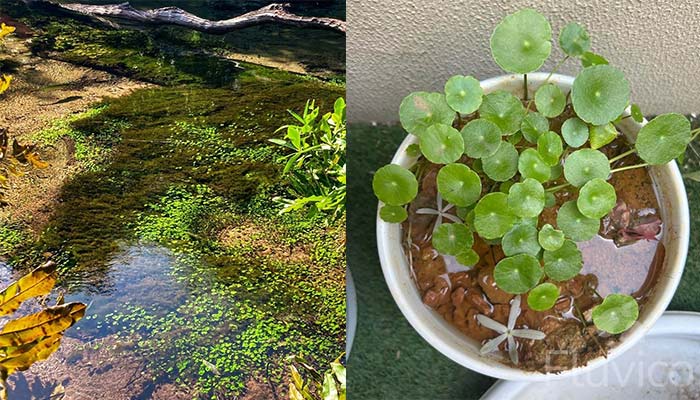
Natural Habitat and Origins of Pennywort
Pennywort is native to tropical regions of Central and South America, where it can be found growing in a variety of aquatic environments, such as rivers, streams, and marshes.
The plant thrives in shallow water and can often be seen along the edges of ponds or lakes, partially submerged or floating on the water’s surface.
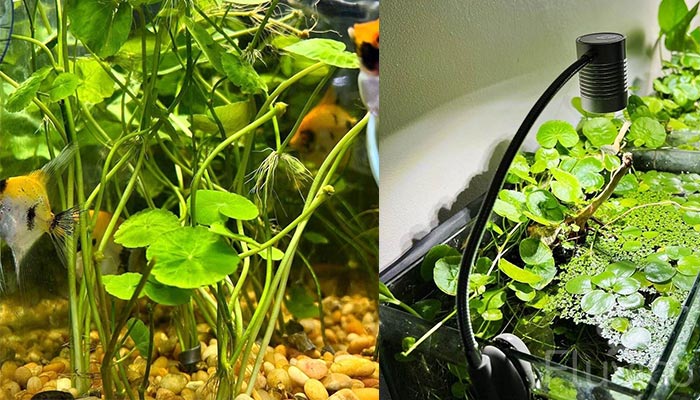
Appearance and Varieties of Pennywort
Pennywort has a distinctive appearance, featuring round, light green leaves that grow in clusters along long, trailing stems. The leaves are typically about 1-2 inches in diameter and have a slightly wavy edge, giving the plant an attractive, textured look.
While there are several species of Hydrocotyle, Hydrocotyle leucocephala, or Brazilian Pennywort, is the most common variety found in aquariums.
FAQs
Can I grow Pennywort emersed?
- Yes, Pennywort can be grown emersed (partially submerged) in paludariums or terrariums, as long as its roots have access to water.
How fast does Pennywort grow?
- With optimal conditions, Pennywort can grow relatively quickly, sometimes up to an inch per week.
Is Pennywort suitable for a beginner aquarium?
- Yes, Pennywort is an excellent choice for low-tech or beginner aquariums due to its adaptability and low maintenance requirements.
Can I grow Pennywort in a cold water aquarium?
- While Pennywort can tolerate temperatures as low as 68°F (20°C), it is not recommended for cold water aquariums with temperatures below this range.
Do I need CO2 supplementation for Pennywort?
- CO2 supplementation is not necessary for Pennywort but can help promote faster growth and more vibrant colors.
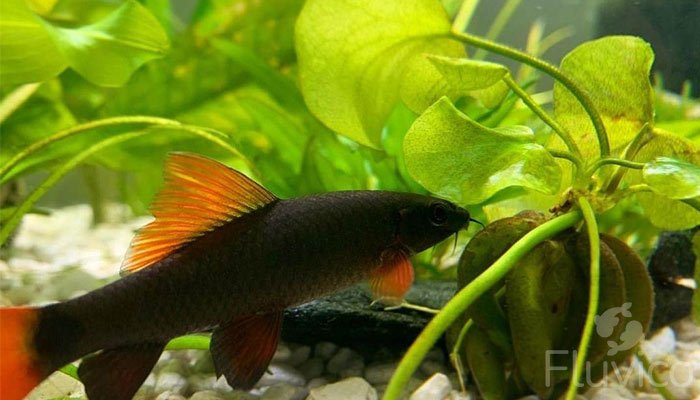
Benefits of Adding Pennywort to Your Aquarium
There are several reasons why you want to add this beautiful plant to your aquarium:
- Aesthetic appeal: The lush green leaves and trailing growth habit make it an attractive addition to any aquatic environment. Its unique appearance can create a visually appealing contrast to other plants and hardscape elements in your aquarium.
- Oxygenation: As an aquatic plant, it helps oxygenate the water through the process of photosynthesis, contributing to a healthier environment for your fish and other aquatic creatures.
- Natural filtration: It is known to absorb excess nutrients, such as nitrates and phosphates, from the water, helping to maintain water quality and prevent the growth of algae.
- Shelter and habitat: The dense growth provides shelter and hiding spots for small fish and invertebrates, such as shrimp, promoting a sense of security and natural behaviour.
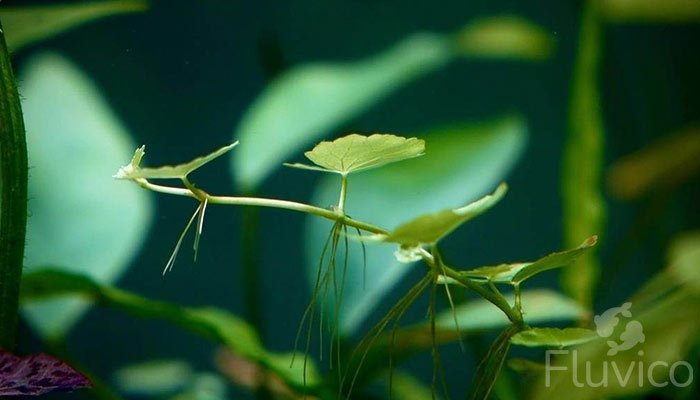
Plant Care and Requirements
Caring for Pennywort in your aquarium is relatively simple, as it can adapt to various conditions. However, there are certain factors to consider for optimal growth:
| Parameter | Requirement |
|---|---|
| Lighting Needs | Moderate to high light levels |
| Temperature Range | 68-82°F (20-28°C) |
| Water Parameters | pH 6.0-7.5, hardness 3-12 dGH |
| Substrate and Fertilizers | Nutrient-rich substrate or liquid fertilizers |
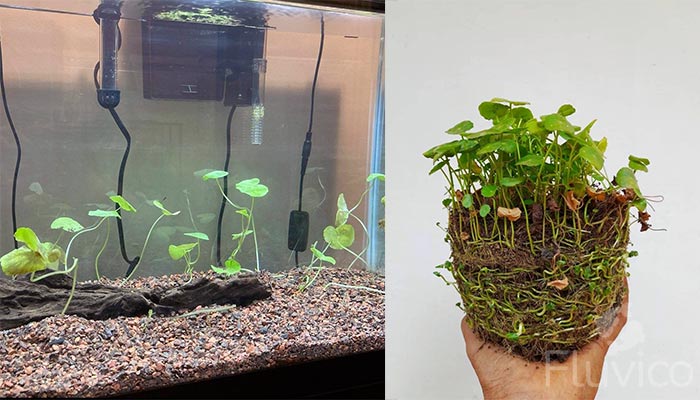
Planting and Propagation
It can be planted in various ways, and its propagation is quite simple. Here’s a more detailed look at the process:
Planting
- Rooted in substrate: To plant in the substrate, trim the stems to a desired length and gently push the cut end into the substrate until it’s firmly anchored. Space the stems apart to allow room for growth and better light penetration. Over time, it will spread and create a lush, carpet-like effect.
- Floating on the water’s surface: If you prefer a more free-form appearance or want to provide shade for your fish, simply let the Pennywort float on the water’s surface. The leaves will extend towards the light, and the trailing stems will create a beautiful, flowing effect.
Propagation
Yes, you can propagate this plant in a few easy steps:
- Monitor growth: Keep an eye on the plant as it grows. You’ll notice that it sends out horizontal runners, which will eventually sprout new leaves and form small plants.
- Trim runners: When the new plants on the runners have developed a few leaves and roots, use a pair of aquarium scissors to trim the runner between the parent plant and the new plant.
- Replant or float: You can now replant the new runners in the substrate or let it float on the water’s surface. If planting in the substrate, follow the same process as described earlier. If floating, you can either let the plant develop roots while floating or anchor it once it has developed a root system.
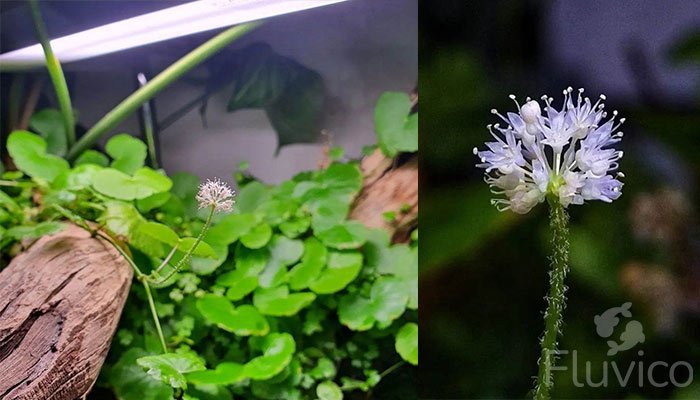
Cultivating Ideal Conditions for Pennywort Flowering
While Pennywort rarely blooms in an aquarium setting, creating optimal conditions can increase the likelihood of witnessing this fascinating event. Follow these guidelines to encourage flowering:
- Lighting: Use moderate to high light intensity. Use full-spectrum LED or fluorescent lights and ensure the aquarium gets 8-10 hours of light per day.
- Water temperature: Temperature range of 68-82°F (20-28°C). Maintain a stable temperature.
- Water parameters: Aim for a pH of 6.0-7.5 and a KH of 3-8 dGH.
- Nutrients: Supplement with a liquid all-in-one fertilizer containing macronutrients and micronutrients.
- CO2 supplementation: CO2 supplementation can promote vigorous growth and increase the likelihood of flowering.
- Water circulation: Moderate water circulation is beneficial for nutrient distribution and helps prevent algae growth on Pennywort leaves.
- Pruning and maintenance: Regularly trim to stimulate new growth. This also ensures that the lower parts of the plant receive adequate light, increasing the chances of flowering.
By creating these optimal conditions in your aquarium, you’ll provide the best environment to thrive and potentially produce flowers, adding an extra layer of beauty and interest to your aquatic haven.
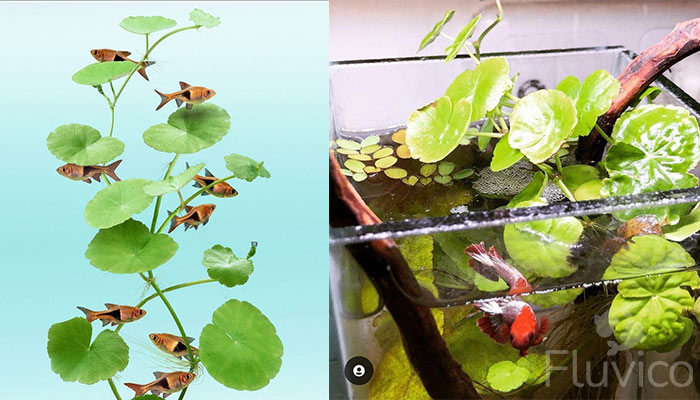
Pennywort Compatibility and Tank Mates
It’s compatible with a wide range of fish species and invertebrates, making it a suitable choice for community tanks.
However, it’s best to avoid aggressive or plant-eating fish, as they may cause damage. Ideal tank mates include small, peaceful fish such as tetras, rasboras, and guppies, as well as invertebrates like shrimp and snails.

Common Issues and Solutions for Pennywort
Though generally a fuss-free plant, you might still encounter some obstacles while caring for it:
- Leaf melt: When you first add Pennywort to your tank or if water parameters suddenly change, the leaves may begin to disintegrate. To sidestep this issue, patiently acclimate the plant to your aquarium by slowly introducing it to the water and keeping water parameters stable.
- Sluggish growth: If it doesn’t seem to be growing as quickly as you’d like, the culprit could be insufficient lighting or a lack of vital nutrients. To foster robust growth, ensure your aquarium has ample light and mull over the addition of fertilizers if needed.
- Algae troubles: Algae might accumulate on leaves if nutrients are overly abundant in the water or if the water flow is lacking. To counteract algae growth, uphold water quality through routine water changes and proper nutrient management. You can also enlist the help of algae-grazing tank buddies like shrimp or snails, or manually remove the algae when necessary.
Is Pennywort right for your Aquarium Setup?
Pennywort’s unique appearance, adaptability, and low maintenance requirements make it a fantastic addition to any freshwater aquarium.
Looking for more aquarium plants? See our Freshwater Plant Care Guides here.
Its ability to oxygenate the water, provide shelter for aquatic creatures, and improve water quality make it an invaluable asset to your aquatic environment.
With proper care and optimal conditions, Pennywort will reward you with lush, vibrant growth and contribute to a healthy, thriving aquarium.
Love Pennywort? Let us know in the comments below. I’m also happy to answer any of your Pennywort questions.
More Reading

15 Types of Cryptocoryne: Which is Best For Your Aquarium Setup?

16 Awesome Low Light Aquarium Plants (Mosses, Ferns & Stem Plants)


18 Types of Aquarium Moss: Photos, Care, Propagation & Growth Guide
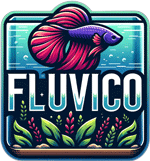
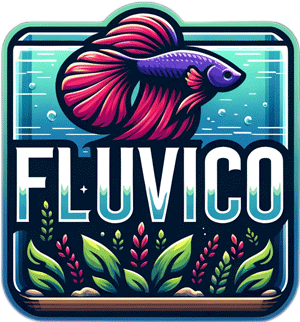
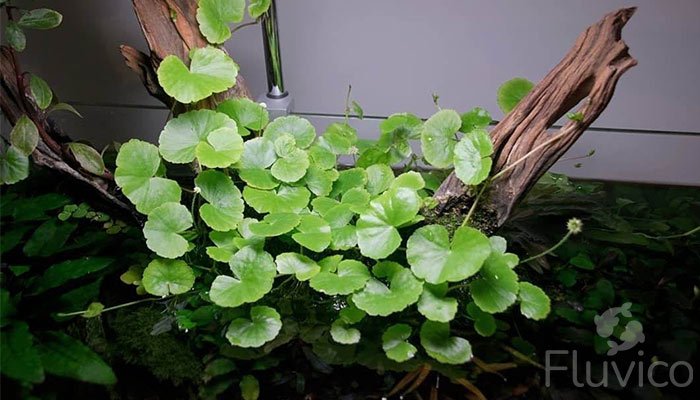
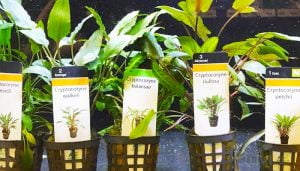
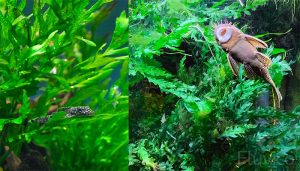
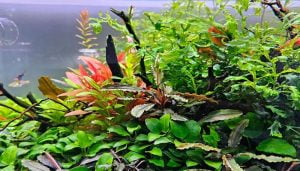


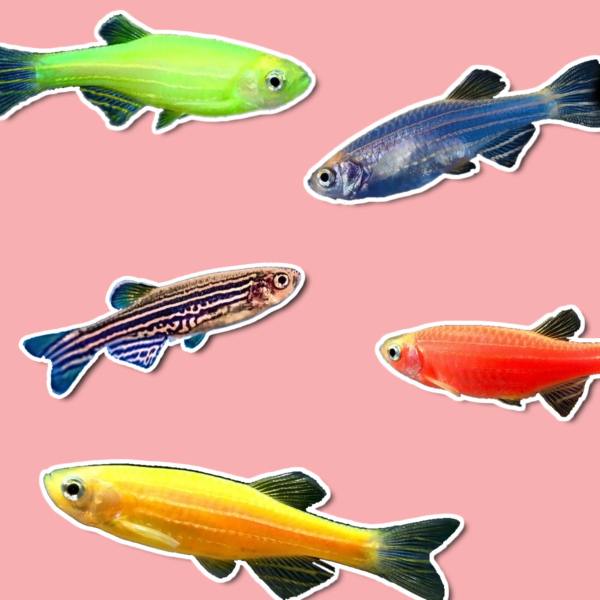
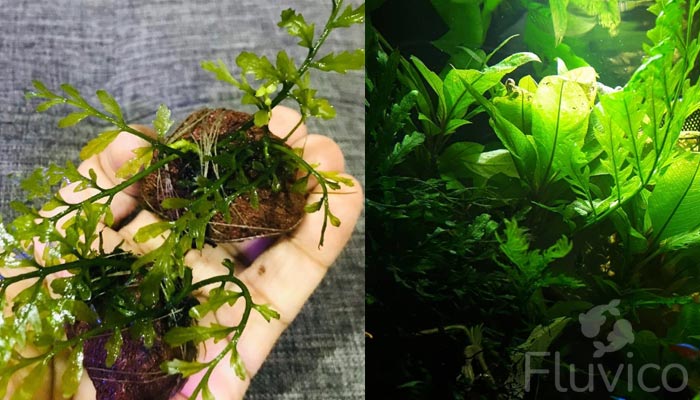
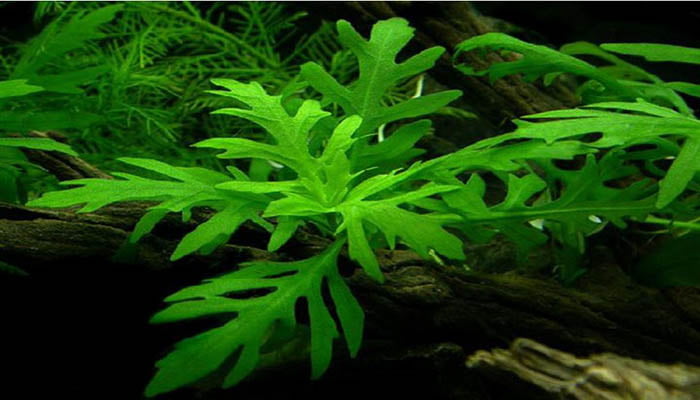


Hope you enjoyed our Pennywort Aquarium Planting & Growth Care Guide!
If you have any questions? Ask away, we’re here to help!